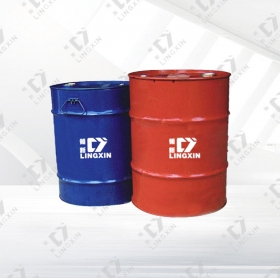company newsCurrent Pocation:home > company news
Chemical alcohol recovery of polyurethane foaming agent
Today to introducePolyurethane foaming machineHow is the foam recovered by chemical alcoholysis?

In the research on chemical recovery of soft polyurethane wastes, alcoholization is the most active method and has achieved good economic and environmental benefits. A lot of alcohol solution method has been studied, and many small molecule alkyl glycol as the main agent of alcoholysis, to a certain proportion of alcoholysis agents and alcoholysis aid as alcohol amine and tertiary amine, organic metal compounds, under the action of temperature control in the alcoholysis reaction of 1-150-250 ℃ for 5 hours, can be recycled polyol and a mixture of aromatic amines. The reaction decomposition process mainly includes the following two types:
. Transesterification of carbamate groups
The common polyurethane materials mainly contain the characteristic groups of carbamate, which is prone to transesterification when alcohol is encountered under certain conditions, so that the bond breaks to form polyether alcohol. The equation is as follows:
R1~~NHCOOR2+HO~~OH■
R1—NHCOO~~OH+R2OH
B. Decomposition of urea bond groups
在制When preparing soft polyurethane foam, the raw material will contain water or specially added water as the foaming agent. Water reacts with isocyanate to produce urea bond groups in the foam, which can also be decomposed by alcohol to produce carbamate containing hydroxyl and corresponding amine. The equation is as follows:
~~NHCONH~~+HO~~OH■
~~NHCOO~~OH+NH2~~
From the above two decomposition processes, it is very important to choose the type and ratio of alcohol decomposition agents and alcoholysis agents, which not only determines the reaction temperature, time and other technological conditions, but also determines the properties of alcoholysis products. Diols with different molecular weights were used as alcoholylic agents. The molecular weight of the polyol produced is also different, generally speaking, the molecular weight of the polyol produced by the polyol hydrolyzing agent is also relatively high, according to the needs of the regeneration of the polyol can choose to use the hydrolyzing agent is glycol, propylene glycol, butanediol, pentanediol, diethylene glycol, dipropylene glycol, dipropylene glycol, etc..
For alcoholysis agents can choose alkylamine, tertiary amine, alkali metal or alkaline earth metal acetate, titanate, etc., the effective compatibility of alcoholysis agents and alkylamine agents can reduce the reaction speed and temperature, shorten the reaction time, improve the reaction capacity of alcoholysis, reduce the amount of alcoholysis agents, facilitate the separation of recovery and recovery of polyether refining. In the classification of some processes, according to the coordination of alcoholysis agents and alcoholysis agents, the alcoholysis method is divided into diol method, alcohol amine method, alcohol coating method (also known as alcohol alkali metal hydroxide method), alcohol phosphate ester method. The principle of these processes is the same, the effect is slightly different, the characteristics of each process.
Classification of alcoholysis process conditions and various process characteristics process conditions diol method diol amine method diol coating method diol phosphorus method of alcoholysis agent C2~C6 diol C2~C6 diol (90% -- 100%) OH equivalent to 30~1000 polyglycol and amine compounds and the molecular weight of 400~3000 polypropylene glycol ether Tertiary amine C4~C8 dialkanolamine (0~10%) Decomposition of alkali metal hydroxide halogenated phosphate ester foam ratio 0.3 ~ 1.00.3 ~ 1.030 ~ 500.3 ~ 1.0 decomposition temperature / ℃ of 150 ~ 200175 ~ 25060 ~ 160170 ~ 250 decomposition time/h4-83 ~ 151-53 ~ 5 recycled materials composition polyamine, polyols polyols polyamine tdi, polyol, amine phosphate recycling methods and industry use blending with 20% ~ 40% poly ether mixed use direct use of foamed directly using foam.